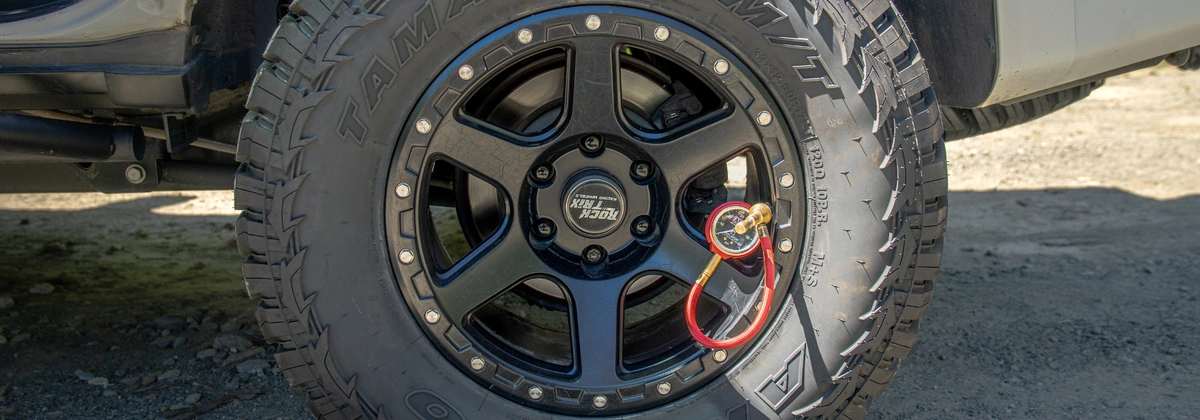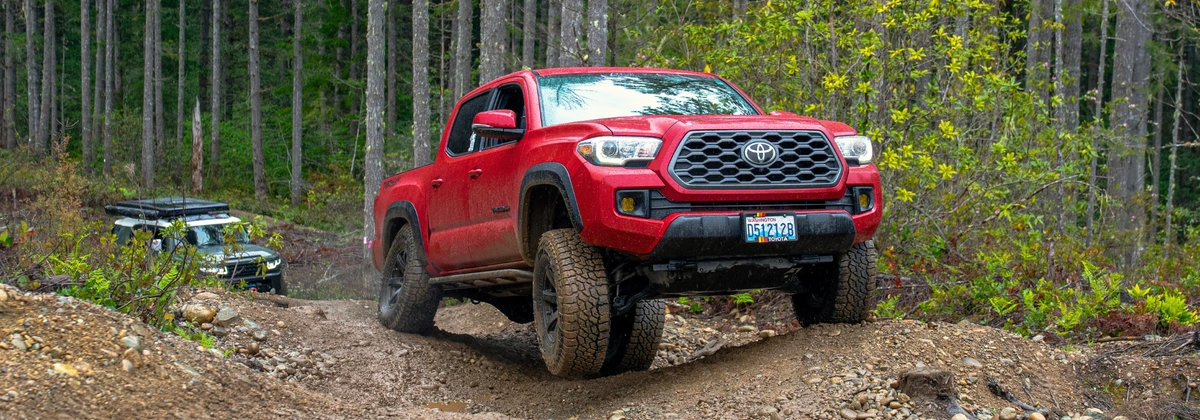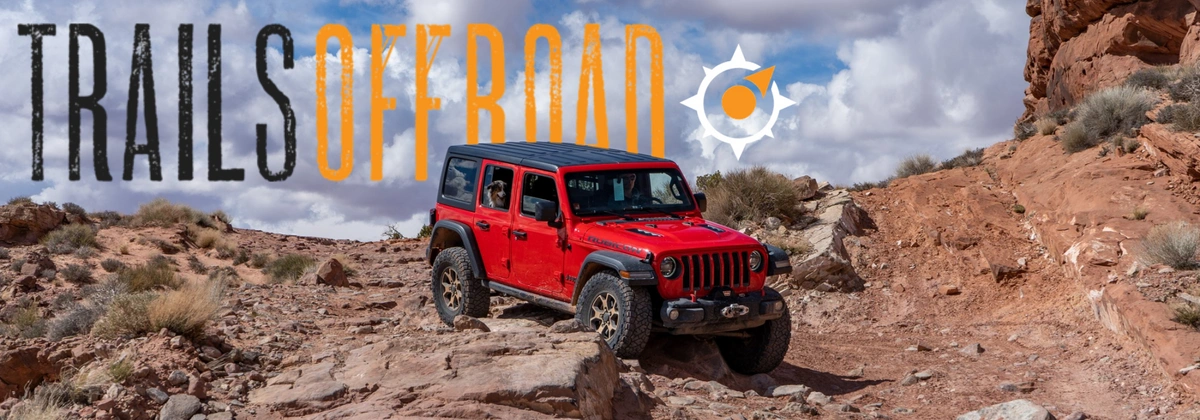
4x4 Spring Cleaning: 6 Essential Maintenance Tips
Spring is here, which means it’s time to shake off winter and get your rig ready to hit some trails. No matter what your vehicle has been battling this winter (mud, snow, or road salt), a little maintenance now can save you from headaches later.
And what better time to give your 4x4 some attention than at the start of the season? For many, this is when temperatures start to rise and trails start to open. So make sure you have a smooth and safe off-road season this year by tackling the basic maintenance now. Here are 6 essential spring maintenance tips to keep your rig in top shape.
Some of the maintenance tips in this guide require basic mechanical knowledge and the right tools. If you're new to working on your truck, consider seeking guidance from a more experienced friend or a professional mechanic before tackling certain tasks on your own. Safety always comes first!
1. Deep Clean EVERYTHING!
A thorough cleaning is more than just about aesthetics—it’s essential for the health of your truck. Did you know that winter driving can cause rust and corrosion if you leave grime, salt, mud, and debris behind?
Whether you start with the exterior or interior is up to you, but giving your rig a proper wash is essential. Begin by scrubbing off dirt, salt, and grime from the exterior, paying extra attention to areas where buildup accumulates. The undercarriage is especially important—road salt and mud can cling to your suspension and frame, leading to corrosion over time. If you’ve tackled a lot of winter trails, using a pressure washer can help blast away stubborn debris.
To remove salt and mineral buildup, opt for a low pH presoak or a specialized soap designed to neutralize salt and pair it with your regular soap. We recommend Chemical Guys "Tough Mudder" to get all the hard-to-remove grime off your truck.
Next, vacuum the interior to remove any leftover dirt from winter off-roading and to freshen up your truck’s cabin. Don't forget to give your floor mats some love and wipe down all surfaces to remove dust and grime.
This isn't necessary but if you have the time waxing your vehicle can protect the paint from the dirt and grime that you'll be collecting on your vehicle the next time you hit the trails. The wax will act as a protective layer against the elements.
2. Inspect and Rotate Your Tires
Off-roading can be tough on your tires, so now is the time to check their condition. And for some, now is the time to change out your tires for summer trails.
You'll want to start by inspecting each tire for signs of wear, such as cuts, cracks, or uneven tread. Look closely for any punctures that could cause a flat on the trail. Make sure your tire pressure is correct, as underinflated or overinflated tires can affect your vehicle’s performance and increase the risk of damage. Additionally, rotating your tires ensures even wear and extends their lifespan, so make sure to rotate them according to the manufacturer’s recommendation.
If you’ve been using winter tires, it’s time to swap them out for your off-road tires as the weather warms. I will be swapping my A/T tires for my M/T tires since I'll be doing more technical obstacles in the warmer months.
3. Knock Out Easy DIY Maintenance at Home
Spring is the perfect time to tackle some basic DIY maintenance tasks that will keep your rig running smoothly throughout the season.
Here are a few easy tasks to do:
- Check your fluid levels. This includes engine oil, coolant, brake fluid, and power steering fluid. Low or dirty fluids can cause your engine to overheat or lead to premature wear on important components.
- Replace your wiper blades if they are streaking or making noise.
- Check your filters to ensure they’re not clogged with dust or debris.
- Inspect your battery terminals for corrosion and clean them if needed—cold weather can take a toll on your battery, and you don’t want to be stuck with a dead rig in the middle of nowhere.
4. Examine Suspension and Steering Components
A well-maintained suspension and steering system are key to safely tackling any off-road adventure, so it's crucial to inspect them thoroughly after a season on the trails. Check for any loose, worn, or rusted components, and ensure your shocks and struts are functioning properly. The springs should be in good shape, and there shouldn’t be any visible cracks or leaks in the shock absorbers.
You should also test your steering system for responsiveness. Steering that feels loose or unresponsive or if you hear strange noises while turning could indicate an issue with your steering components. If you’re unsure, always take it to a professional. Replacing worn parts early on can prevent more costly repairs down the line and ensure a smooth ride when you’re tackling tough trails.
5. Check Your Brakes
Brake performance is non-negotiable when you’re off-roading, so checking your brake system should be a top priority. Salt and moisture from winter roads can corrode your brake pads, rotors, and lines, leading to diminished braking power. Here's a quick guide on what you should look out for:
Check While Driving
- Listen for squealing or grinding – Worn pads make noise
- Feel for vibrations – Shaking in the pedal or steering wheel can mean worn pads or warped rotors, make sure to check your alignment as well
- Notice stopping distance – If braking takes longer, your pads may be too thin
- Check for pulling – If your truck drifts while braking, one side may be more worn
Quick Visual Inspection
- Look at the brake pads – If they’re under 3mm thick, replace them
- Inspect rotors – Look for deep grooves, cracks, or discoloration
- Check brake lines – Look for leaks or cracks that could reduce braking power
- Examine brake fluid – Make sure it’s topped off and free of air bubbles
For a Closer Look
- Remove the wheel – Secure the truck, loosen the lug nuts, jack it up, and take off the wheel
- Check for wear or damage – Uneven pads, damaged rotors, or leaking lines need attention
If anything seems off, have a professional check your brakes before heading out!
6. Restock and Refresh Your Recovery & Emergency Gear
While taking care of your vehicle is key to getting through the trails safely, it’s just as important to maintain the gear that can get you out of a tough spot. Take a moment to check your recovery gear and emergency supplies. Make sure everything is in working order, and go through your tool kit to see if anything is missing—because the last thing you want is to break something on the trail and not have the tools to fix it.
If you have a winch, now’s the time to inspect it. While you’re washing your truck, don’t forget to clean your winch line too. This process will differ depending on which kind of winch rope you have.
Synthetic
To do this, begin by soaking the cable in water with a little dish soap. Dirt trapped in synthetic rope can act like sandpaper, wearing it down under tension and leading to failure.
Once in the water, push the rope together to open up the strands, and try to rinse any gunk out of the rope’s core. Don’t use a brush or anything, just your hands. Make sure to let it dry fully before spooling it back up and keep it covered as much as possible—UV exposure can degrade it over time. After cleaning your winch line, spool it back onto the drum neatly and under tension so it doesn’t tangle. Synthetic winch lines are far easier to handle than steel ones, but they require extra care to last.
Steel
Cleaning steel winch cable takes a bit more effort. Use a wire brush to scrub off dirt and debris, and compressed air can help with the finer particles. If you wash it with soapy water, make sure it’s completely dry before spooling it back on.
When it comes to lubrication, some people apply a dry, non-sticky coating to prevent rust, while others skip it to avoid trapping dirt. If you choose to lubricate, use a product that dries hard and apply it sparingly.
It’s also a good time to refresh your emergency kit with extra water, food, a first-aid kit, and anything else that may have been used up on your last trip. Being prepared can make all the difference when you’re far from home and run into an unexpected situation.
Find the Right Trails for Spring with Trails Offroad™
Once your 4x4 is prepped and ready, the next step is finding the perfect trails for spring adventures. Snowmelt, muddy conditions, and seasonal closures can make it tricky to know where to go, but Trails Offroad™ makes it easy to plan your next trip.
Trails Offroad™ provides detailed trail guides, complete with difficulty ratings, seasonal accessibility, and recent trail conditions. Spring is a great time to explore lower-elevation trails that have dried out before heading into the mountains later in the year. Many forest roads and desert routes open up in the spring, making them ideal for a shake-down run after winter.
Use Trails Offroad’s™ filtering options to find trails suited to your skill level, vehicle setup, and the kind of adventure you’re looking for—whether that’s a scenic dirt road or a technical rock-crawling route. Checking recent trail reviews can also help you avoid unexpected closures or tricky sections caused by spring runoff.
Spring maintenance is the perfect time to get your 4x4 ready for a fresh season of off-roading. By giving your truck a deep clean, inspecting critical components like tires, brakes, and suspension, and ensuring your recovery gear is stocked and ready, you’ll avoid potential issues and hit the trails with confidence.
And when it comes to finding the right trails, Trails Offroad™ is your go-to resource for up-to-date trail conditions and guides. A little time spent on maintenance and planning now will pay off big during your adventures ahead.
So, grab your gear, check your rig, and get ready to make the most of spring off-roading!












